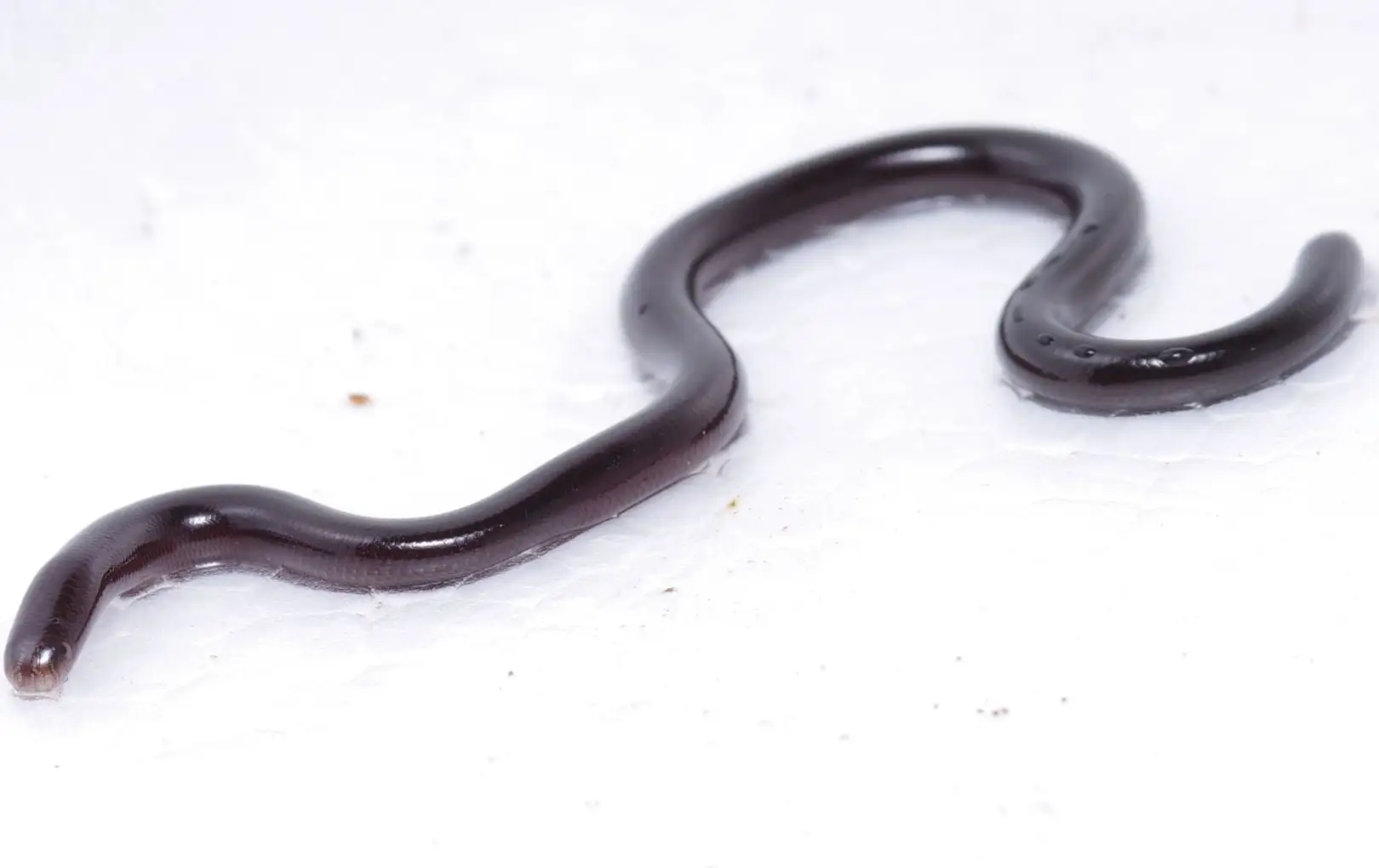Scientists reveal how the flowerpot snake repairs DNA and provides insights into human genetic conditions like Down Syndrome
The flowerpot snake, one of the smallest snake species in the world, has some remarkable and unconventional traits. Also known as the Brahminy blind snake, it stands out as the only known snake species with three sets of chromosomes instead of the typical two. What’s even more surprising is that it can reproduce asexually, without the need for a mate.
Researchers from The University of Texas at Arlington have been studying the flowerpot snake’s unique genome to uncover how it manages to repair its DNA and prevent harmful mutations. Their findings, published in Science Advances, provide new insights into genetic repair mechanisms that may help expand our understanding of human gene evolution.
“This DNA repair and replication activity supports a fascinating mechanism called premeiotic endoreplication,” said Matthew Fujita, a professor of biology at UTA and co-author of the paper. “Through this process, the snake duplicates its chromosomes before dividing them, bypassing the need for the typical pairing of chromosomes in sexual reproduction. This allows the snake to produce offspring that are exact genetic clones of itself.”
The flowerpot snake’s ability to reproduce without a mate, alongside its unusual genetic makeup, could offer valuable insights into human conditions like trisomy, which includes disorders such as Down Syndrome.
“Having multiple sets of chromosomes is rare in animals, yet the flowerpot snake thrives with three sets, compared to the typical two in humans,” Fujita explained.
The research team used advanced genomic technology to reveal that the flowerpot snake, native to Africa and Asia, has 40 chromosomes arranged into three subgenomes. These subgenomes are thought to have evolved through complex genetic events, including chromosome fusion in ancestral species. The researchers suggest that this unique genetic structure enables the snake to reproduce independently of male sperm.
A critical question for the researchers was whether this reproductive strategy posed any evolutionary challenges. Asexual species typically struggle with the lack of genetic diversity, which can lead to the accumulation of harmful mutations over time. However, the flowerpot snake appears to have developed mechanisms to avoid this risk. The researchers speculate that the snake’s slow and steady evolutionary rate helps to limit the buildup of detrimental mutations.
In addition, the team explored genetic variations across different flowerpot snake populations, which suggest that exchanges of chromosomes between the subgenomes occur. These exchanges seem to balance genetic diversity and stability, maintaining enough variation for adaptation while preventing reproductive incompatibilities.
The study also uncovered an unexpected finding: many of the snake’s immune-related and sexually selected genes, such as those involved in sperm development, have lost their functions. This discovery challenges traditional views about the limitations of asexual species. Contrary to the belief that asexual reproduction leads to evolutionary stagnation, the flowerpot snake demonstrates how nature can innovate and adapt in remarkable ways.
“Rather than being an evolutionary ‘dead end,’ as researchers once thought, the flowerpot snake shows that asexual reproduction can work in fascinating ways,” Fujita said.
